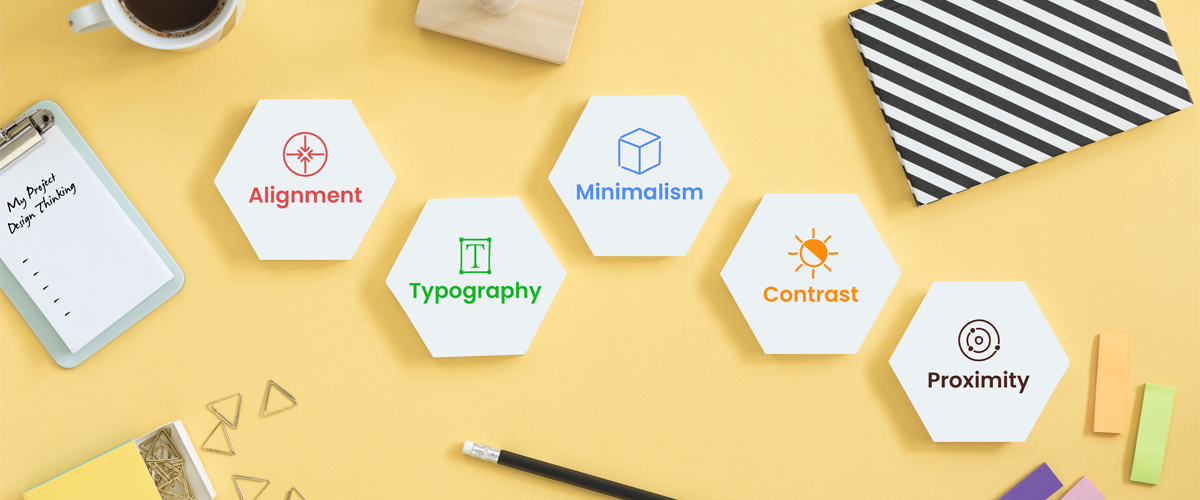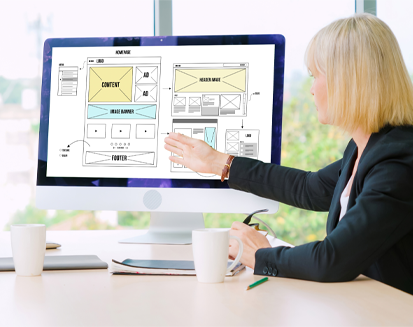The design process may seem straightforward; however, as one begins to express their intended message visually, it may become a source of frustration.

The elements of art are often regarded as the fundamental components that constitute the foundation of design. Conversely, the principles of design are the guiding principles that govern the arrangement and organization of these elements. Whether an entrepreneur or an aspiring designer, a comprehensive understanding of the fundamental principles of design can undoubtedly augment the efficacy and utility of their most recent graphic design creation.
Once a comprehensive understanding of the many design aspects is attained, it is common to develop a sense of ambition and want to include varied forms, diverse colors, and various lines and typefaces. However, in the absence of design standards, the resulting composition may need more cohesion, exhibit clarity, and provide challenges in terms of navigation.
Principles of Design
The principles of design refer to a set of fundamental concepts and guidelines that govern the arrangement and organization of visual elements in many artistic and creative disciplines. Each design is carefully crafted with a specific message and target audience in consideration. By using these five principles, individuals can develop an effective and easily understandable design.
Alignment
The concept of alignment refers to the arrangement or positioning of elements in a particular context or system. It is an essential element in design since it provides direction, coherence, and structure to the overall composition.
Designers examine the natural scanning patterns of individuals while developing a product. The many types of alignment, including left, right, centered, and justified, exhibit distinct characteristics in their use and application. In English-speaking countries, the convention is to read text from left to right. As a result, left alignment is the prevailing typographical practice. However, in some contexts, such as promotional or cosmetic objectives or shorter texts, other varieties are deliberately used.
Alignment is often used in the context of two distinct design components: typography and pictures. Graphic designers strive to achieve a harmonious equilibrium between visual elements and textual content, ensuring that both components are pleasing and integrated. Effective alignment in a composition enhances its visual presentation, resulting in a well-organized, visually appealing, and easily understandable text for the intended readership.
Typography
Typography is the art and technique of arranging type in order to make written language legible. To maintain clarity and prevent visual disorder, using the lowest amount of fonts within a composition is essential. Optimal decision-making entails using typefaces that are part of the same font family or have shared properties. They will establish a greater degree of harmony among themselves.
The optimal line length plays a crucial role in facilitating the readability of content displayed on a website. Excessively short texts compromise the fluidity of the content, as they require frequent transition to the next line. However, if the text is shorter, it will need substantial time to concentrate on the material being studied. The line width should be limited to a maximum of 60 characters. The use of optimal line spacing, also known as line height, plays a significant role in enhancing the legibility of text.
The ultimate design of typography is determined by its structure. When an individual is confronted with a visual field consisting only of letters, it becomes hard to understand.
When the text is segmented into individual words, sentences, and coherent sections, it becomes feasible to comprehend its substance. The completion of the assignment may be enhanced by implementing structural organization to the content, removing headers of varying sizes, altering the style, and emphasizing quotations. Subsequently, the text may be comprehended with more ease and practicality.
Minimalism
Minimalism is a design philosophy that advocates for simplicity and reducing unnecessary elements. The notion of “simplicity” is derived from the foundational rule of usability. A web page should possess visual clarity, user-friendly navigation, efficient resource loading, adherence to consistency, and a primary emphasis on content.
Efficient navigation is facilitated by deliberately excluding extra parts and implementing a simple structure, prioritizing faster download speeds. The concept of minimalism is to direct the visitor’s attention towards the fundamental qualities by eliminating unnecessary elements.
Contrast
Opposites attract holds true not just in interpersonal relationships but also in design aspects. If a composition is devoid of contrast, where every element, such as color, typeface, form, and so on, has identical dimensions, it results in a notably lackluster design.
Contrast is a fundamental element in design, enhancing its visual impact and facilitating its recollection among spectators. The use of contrast also enhances the usability of a composition.
The strategic use of contrast to guide the viewer’s attention towards elements is of utmost significance. For example, when all elements within a design have similar dimensions, it becomes challenging for the audience to identify the relative importance of different pieces of information.
By using the technique of contrast, designers can draw attention to certain parts they like to highlight, establishing a focus point for the audience and a visual hierarchy.
Proximity
Designers use the notion of proximity when they adjust the spacing between pieces, either by bringing them closer together or moving them further away. There are two primary rationales for a designer to use the principle of proximity: to establish associations or to utilize them strategically.
The perception of relatedness among design aspects within a composition is facilitated when these pieces are positioned close to one another. By strategically placing pieces at a distance from one another, a designer can effectively communicate the absence of any discernible link between these elements. The interplay of aspects gives rise to notions of relevance, organization, structure, and hierarchy.
The concept of proximity has significance in the context of a designer’s endeavor to convey a message or accomplish a certain objective, particularly in marketing and advertising. In graphic design, the strategic use of proximity is well-recognized as a creative approach to branding.
Using the principles of design
While these five principles are often regarded as the fundamental tenets of design, no rigid set of instructions dictating their use exists. Proficient designers, with time, develop the ability to rely on one’s visual perception. Deviating from established design rules might occasionally benefit, but following design principles is effective for the long run.
Final Thoughts
When correctly used, these five principles may serve as a significant tool for designers. Regardless of the specific form of graphic design that aligns with your organization’s requirements, the design’s effectiveness may be improved by using the fundamental principles of design.
Are you looking for a reliable UI/UX design agency to design your next digital product? Graypple design studio, with an experienced team of UI/UX designers can help you design visually-appealing and highly engaging web and mobile apps. Contact us now for a free consultation.


